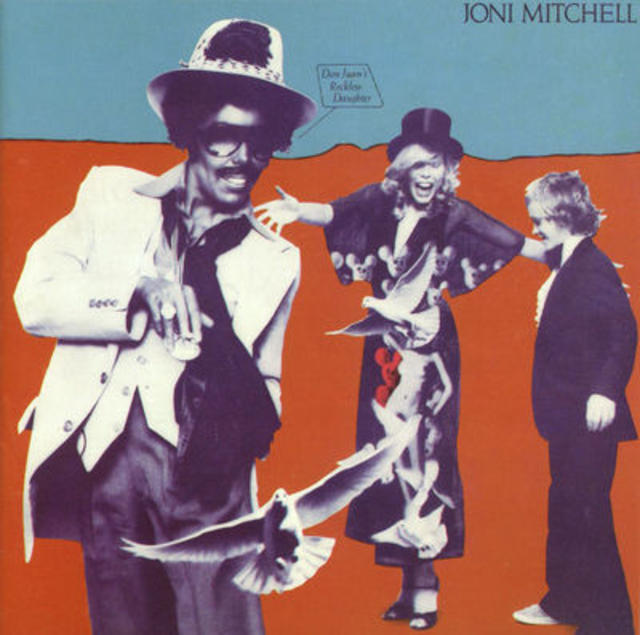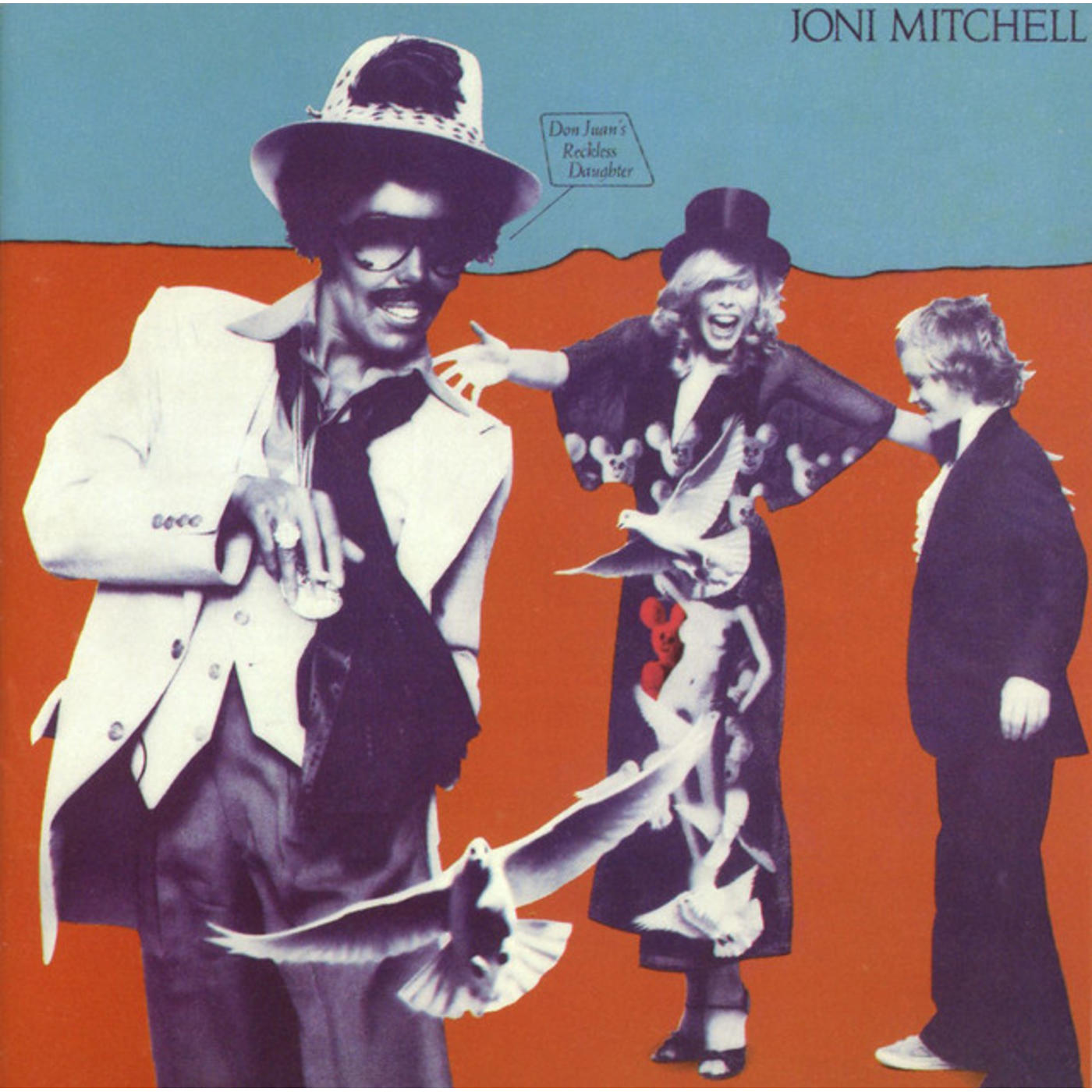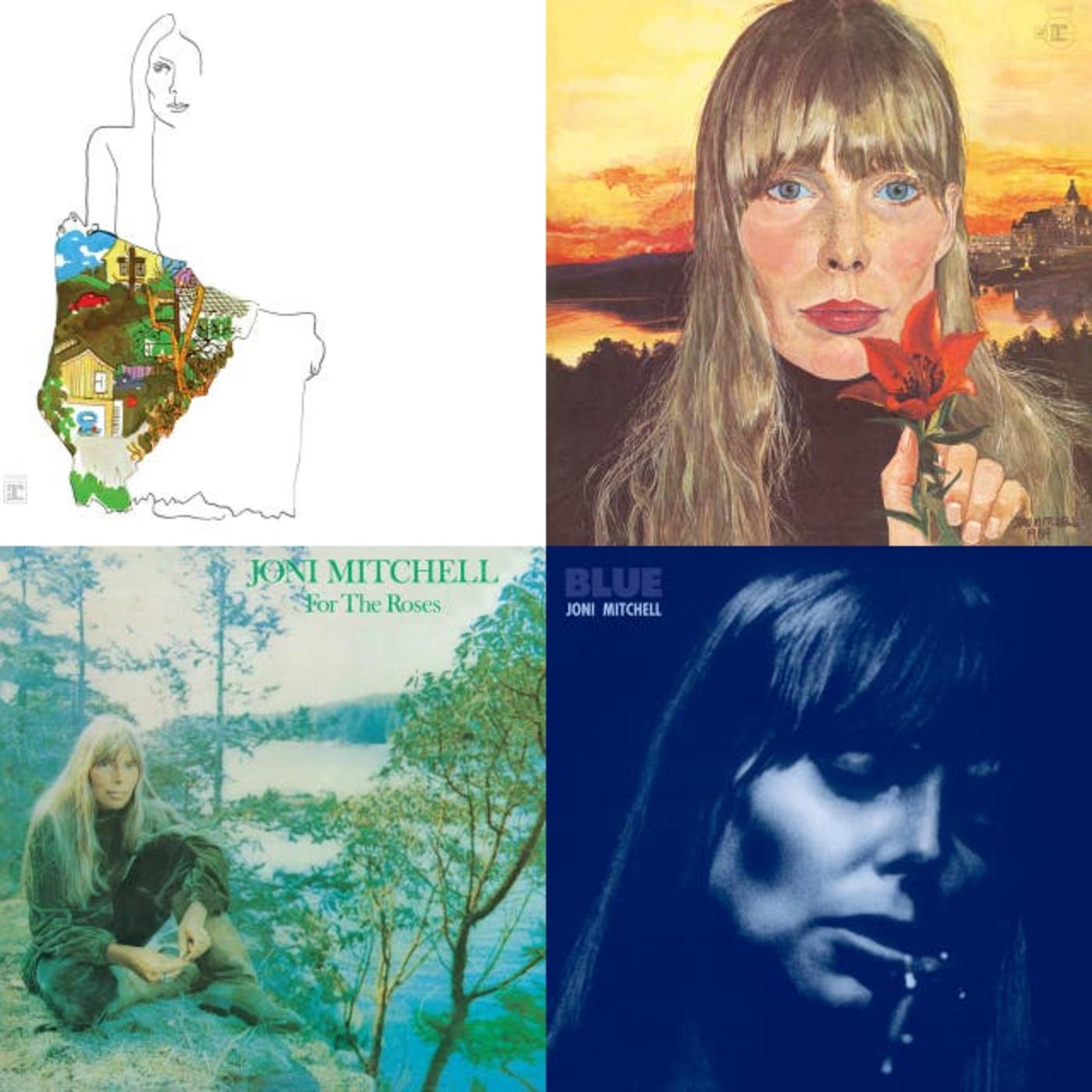Make It a Double: Joni Mitchell, DON JUAN'S RECKLESS DAUGHTER

The success Joni Mitchell achieved on her wonderful run of hit albums in the early '70s (from LADIES OF THE CANYON through COURT AND SPARK) provided her with sufficient artistic credit to explore whatever avenues she desired. She chose jazz and with 1975's THE HISSING OF THE SUMMER LAWNS, began to devote her considerable creative energies to album-length dives into non-linear melodies and story-songs with open-ended plots and streetwise characters. To pull this off, Mitchell also employed some of the cool, (mostly) young players who were then pushing electric jazz into more atmospheric spaces.
By the time of 1977's DON JUAN'S RECKLESS DAUGHTER, this approach had evolved into the glorious, side-long "Paprika Plains," a wistful childhood reverie of a woman in some dank downtown club, stepping outside for fresh air as a rainstorm moves over the block. As the dream overtakes her character, Mitchell abandons the narrative, letting strings and a very Keith Jarrett-like piano flow to the front of the mix (Mitchell includes lyrics for this long digression on the record's lyric sheet, but never sings them). The melody becomes the focus, and whisks the listener off before setting him/her back down again after several minutes, "floating back" to the club scene and the night that continues, in spite of what nature is doing outside.
"Paprika Plains" is indicative of what the listener will find on DON JUAN'S RECKLESS DAUGHTER as a whole—namely, Joni Mitchell painting on a larger canvas than ever before, using new musical and poetic colors, expanding upon a new form of her own creation.
Listen to the chorus of Mitchells on "Overture," sparking abstract harmonies thither and yon, with a half dozen guitars in different tunings answering with sharp-edged chords and low-neck picking. There's Jaco Pastorius on the fretless bass, burbling up from below, inserting himself into the conversation. Then the lane is cleared for Mitchell's voice, as seductive an instrument as one could imagine hearing in this space, moving into the verses of "Cotton Avenue."
There are exercises in percussion on DON JUAN'S RECKLESS DAUGHTER, like "The Tenth World," which is virtually all Latin percussion, spiked with voices in call and response, and "Dreamland," where the rhythm propels and carries the song after a sparse opening. There's nothing sparse about "Talk to Me," where very Mitchell-like acoustic strumming gives way to jaunty peaks of vocals, with Pastorius providing counterpoint throughout (points docked, however, for Mitchell's referring to Shakespeare as "Willy the Shake").
The record is not without its detractors (most of whom begin their critiques with the admittedly ugly cover art, part of which features Mitchell in blackface), but to the adventurous listener, DON JUAN'S RECKLESS DAUGHTER has much to recommend it, and plenty to enjoy.


